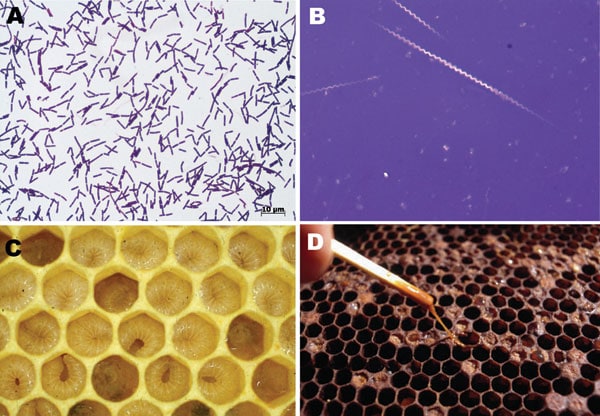Volume 16, Number 3—March 2010
Dispatch
Paenibacillus larvae Bacteremia in Injection Drug Users
Figure

Figure. Paenibacillus larvae gram-positive, spore-forming, rod-shaped bacteria (A) (Gram stain, original magnification ×1,000) with the ability to form giant whips upon sporulation (B) (nigrosine stain, original magnification ×1,000). In American foulbrood (AFB), newly hatched honey bee larvae become infected through ingestion of brood honey containing P. larvae spores. After germination and multiplication, infected bee larvae die within a few days and are decomposed to a ropy mass, which releases millions of infective spores after desiccation. C) AFB-diseased larvae are beige or brown in color and have diminished segmentation (healthy and AFB-diseased larvae). D) Clinical diagnosis of AFB can be made by a matchstick test, demonstrating the viscous, glue-like larval remains adhering to the cell wall.